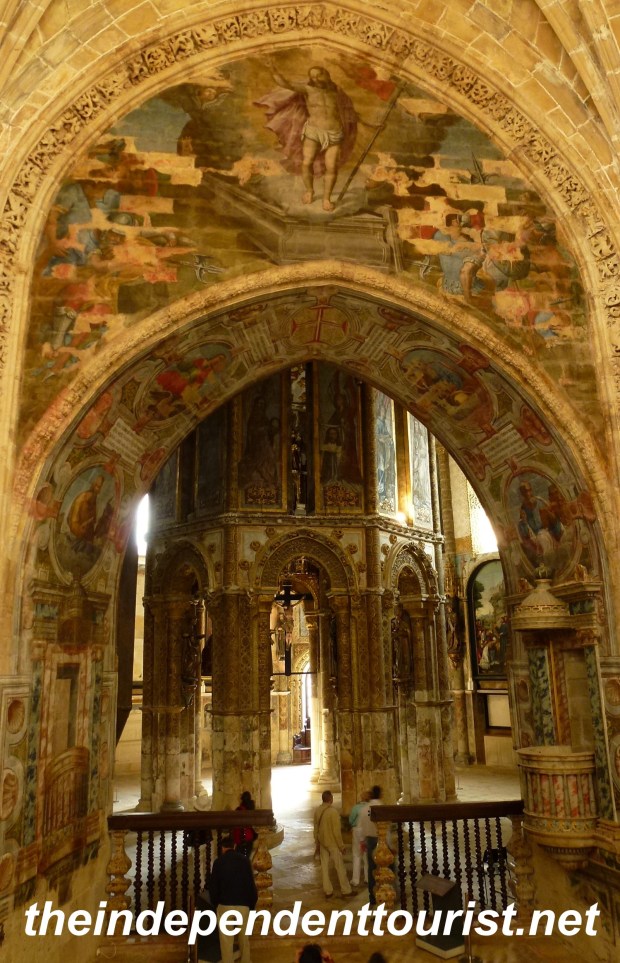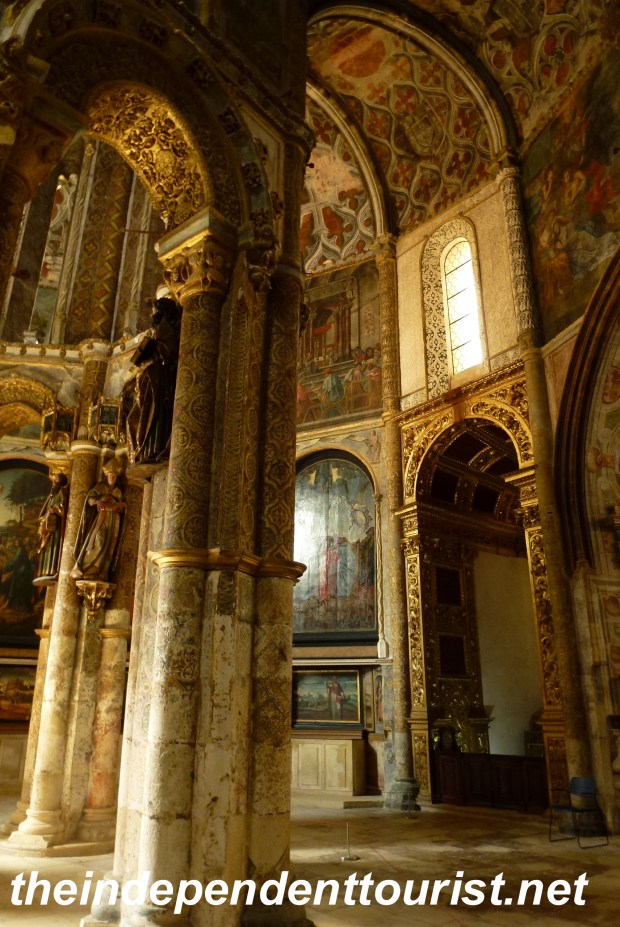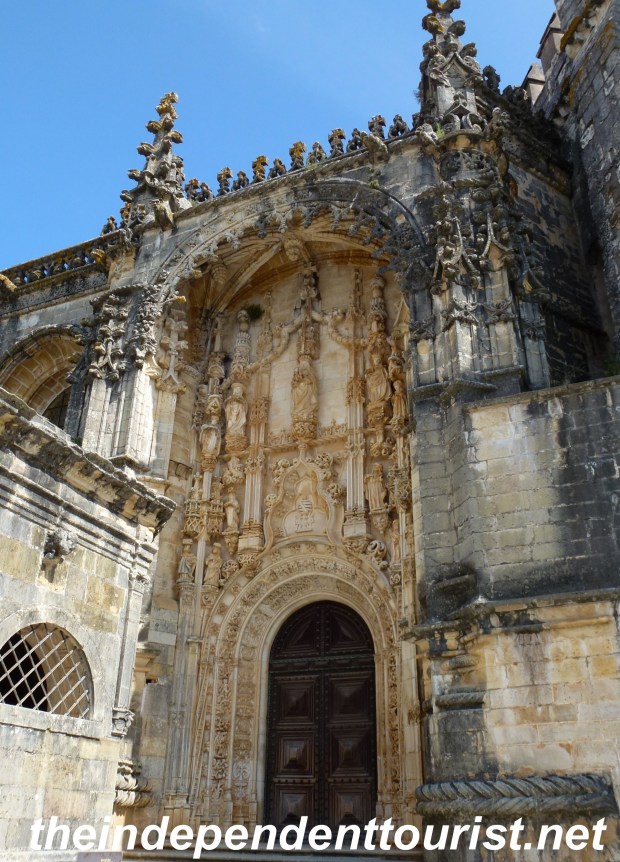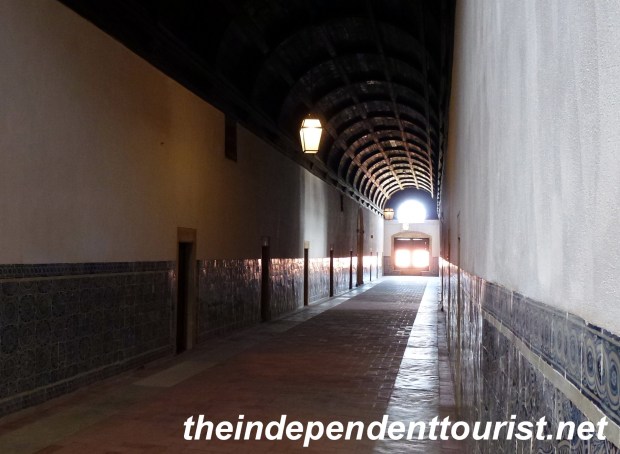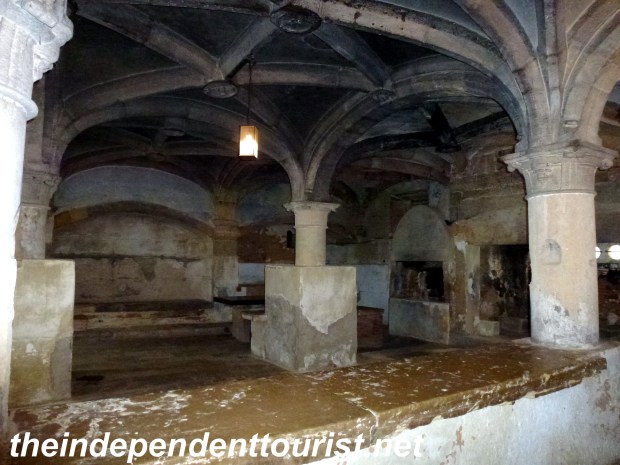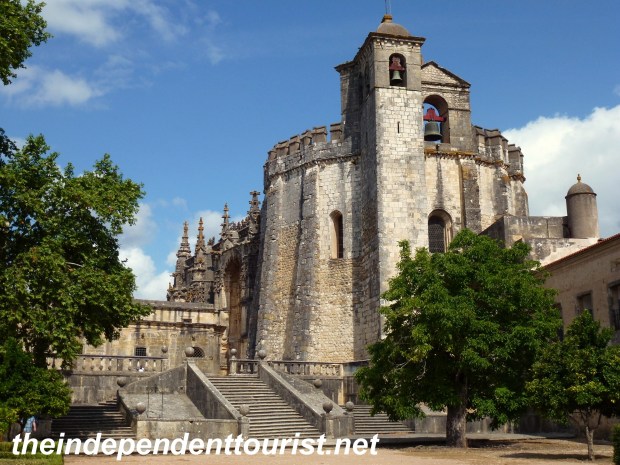
The Templar church (Oratory) was also a defensive tower, it has 16 sides, and was next to an exterior wall. The interior (see pictures below) is amazing.
Huge fortress walls, a Templar castle-like church and a huge late-Gothic monastery all in one. What more could you ask for? That’s what you get with the Convento de Cristo, in the town of Tomar, Portugal.
The fortress grounds and convent sit on a hill overlooking the town of Tomar—the walls are visible from the train station. Ever since I got a book about the Great Monasteries of Europe (by Bernard Schütz) many years ago, I’ve wanted to visit Tomar. With my love of medieval history and interest in the Knights Templar, Tomar is a must do, and I finally had the chance to visit in 2012.
The original fortress was a Moorish settlement (9th to 12th centuries), and the Knights Templar made Tomar their headquarters in 1160. The Templars were heroes at the time due to their role in the Reconquista, helping push the Moors out of the Iberian Peninsula. The Knights brought with them architectural refinements from the Middle East (from their time defending the Holy Land) and the fortress structural design was considered ahead of its time for western Europe.

The famous chpater house west facade window, 1510-1513, late Gothic “Manueline” style (after King Manuel), symbolizes the Tree of Life or Tree of Jesse from the Bible.
When the Order of the Knights Templar (or Order of the Temple) was disbanded in 1319, the fortress of Tomar was turned over to the Portuguese Order of Christ, becoming its headquarters in 1357. King Manuel and King João III in the 16th century added extensively to the site making this a very large monastery—the artistic work speaks to the wealth of Portugal as a world power at that time.
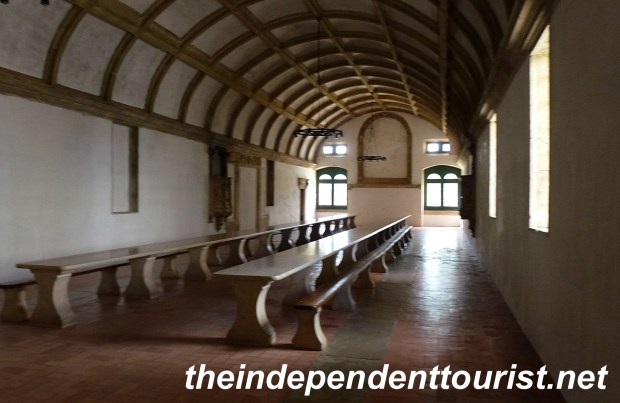
The refectory was finished between 1535 – 1536 by King João III, reserved for reading during meal times.
Practicalities: Tomar is an easy day trip from Lisbon. It’s about a 2 hour train ride (€9.75 each way), and the train leaves from Station Apolónia (eastern side of Lisbon). It’s about a 15 minute hike from the Tomar train station up the hill to the Convento de Cristo. The entry fee was €6. There’s a lot to see, so allow at least a couple hours. I kept finding new cloisters (courtyards), rooms, and unique views and architectural features of the buildings at every turn. The signage is comprehensive and in English. If you get hungry, there is a café on the site as well. Be sure to stroll out and see the terraces, gardens, walls and an aqueduct that was built in the 17th century and finally gave the monastery a consistent water supply.
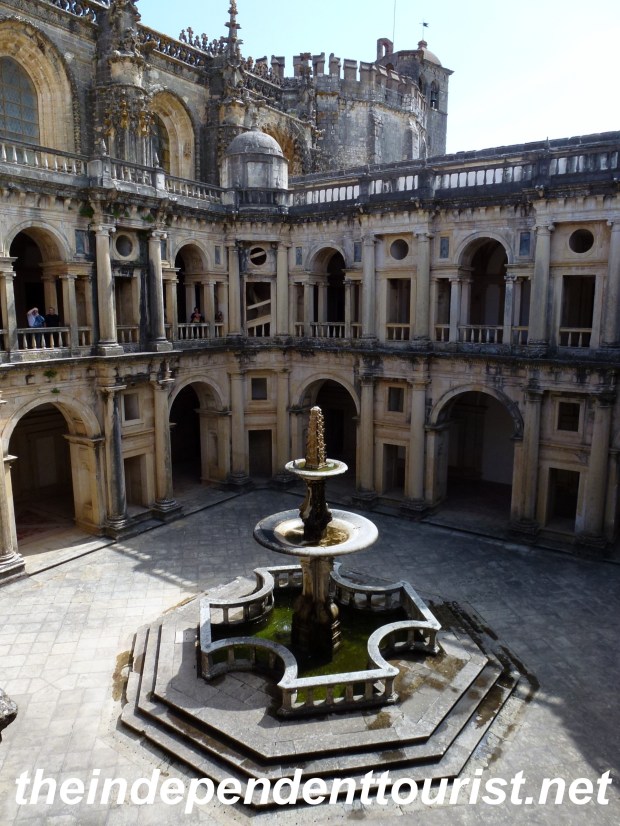
Main cloister—started in 1530-1533, under King Joao III (1521-1557), considered a masterpiece of the European Renaissance.
References: Signposts throughout Convento de Cristo.
